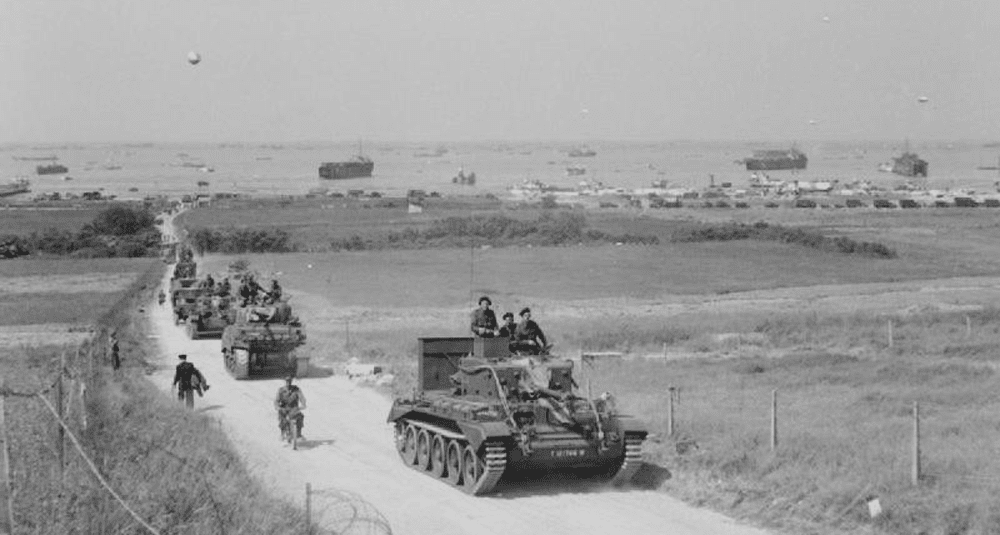Which troops landed at Gold Beach and Sword Beach on June 6, 1944?
Last Updated:
The Normandy landings on June 6, 1944 marked a decisive turning point in the World War II. This major event in contemporary history is also known as “D-Day”. It was the biggest Allied military operation ever, aimed at liberating Nazi-occupied Western Europe. Of the five main beaches where the Allies landed in Normandy – Utah, Omaha, Gold, Juno and Sword – Gold Beach and Sword Beach were the sectors assigned to the British forces, with significant participation by French troops at Sword.
Gold Beach lies between Asnelles and La Rivière. The sector was entrusted to the British Northumbrian 50th Infantry Division, supported by specialized armored and engineering units. The British objective was twofold: to secure the Bayeux road to the west, and to establish a junction with the Canadian forces landing at Juno Beach. From dawn on June 6, the British soldiers, supported by a large naval and air fleet, encountered moderate German resistance, particularly through the bunkers and minefields installed by the German army.
Despite the obstacles, British troops managed to secure Gold beach during the day, advancing inland faster than expected. This allowed them to approach Bayeux, the first French town liberated by the Allies the following day.
Further east, Sword Beach, near Hermanville-sur-Mer, was the landing point for the 3rd British Infantry Division, commanded by General Rennie. This division was supported by the 1st Special Commando Brigade, which included the Commando Kieffer, a unit of 177 French soldiers commanded by Major Philippe Kieffer. They were the only Frenchmen to take part in the June 6 landings under the French flag.
Their presence at Sword Beach was highly symbolic, as they represented Free France, engaged in the reconquest of its territory. The fighting was intense, particularly around the town of Ouistreham, but the Allies managed to advance inland to secure the bridges over the Orne and establish a bridgehead for the rest of the offensive.
The two beaches, Gold and Sword, were of strategic importance, as they were to enable the capture of Caen, an essential crossroads for the control of Normandy. While the capture of Caen required several weeks of additional fighting, the successful landing on Gold and Sword nevertheless established a solid British bridgehead, facilitating the massive arrival of reinforcements and supplies in the days that followed.
During the Normandy landings, British troops landed on Gold Beach and Sword Beach, accompanied by French commandos on the latter. Their courageous and determined action contributed to the overall success of Operation Overlord, initiating the liberation of France and, more broadly, Western Europe.
Today, these Normandy beaches are places of remembrance, recalling the sacrifice of thousands of soldiers who came to defend freedom.
history

Which troops landed at Gold Beach and Sword Beach on June 6, 1944?
Answer
On June 6, 1944, British troops led the landings on Gold Beach and Sword Beach, supported by French soldiers on Sword Beach.